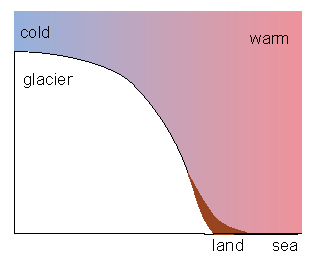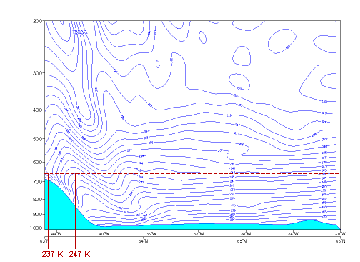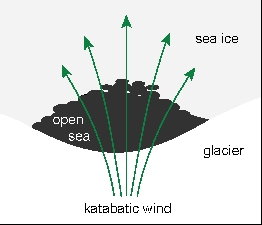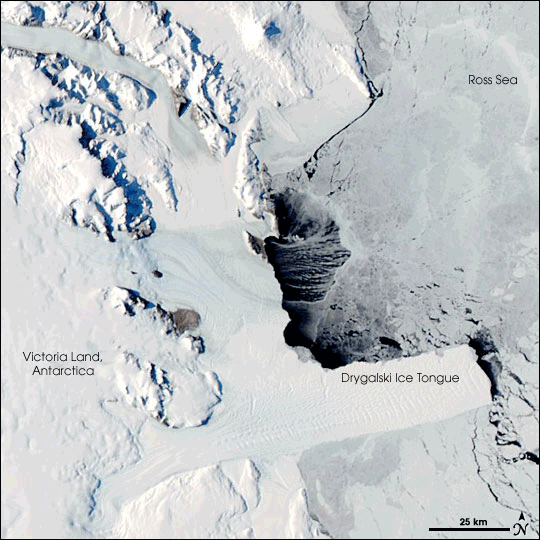Meteorological Physical Background
Greenland's glacier rises up to 3000 m. In cloud-free conditions the air near its surface is cold, between -30 and -20 °C even in summer. The air above it is often warmer, so a temperature inversion is usually present. In contrast, the sea-temperature is around 0 °C, and there is no inversion above it. The sea between Greenland and Iceland is open throughout the year, which favours Piteraqs to arise.
A Piteraq-storm forms in cloud-free conditions, when a cold high pressure or a high ridge is situated over the glacier, and a low pressure approaches Greenland from the east.
The low pressure can be an occluded cyclone, a polar low or a comma. They all occur within polar, and in winter also within arctic, air mass.
The wind starts over the plateau about 50 km from the coastal valleys as a weak thermal wind. The air temperature is colder over the plateau than over the valley slope at the same height. This creates a pressure gradient and consequently, wind from the glacier towards the sea.The winds start over the plateau about 50 km from the coastal valleys.
|
16 February 2015 at 12 UTC blue: temperature
|
|
When a low pressure approaches the coast, the already present pressure gradient tightens and the wind strengthens, and the dry cold air begins to blow towards the low pressure, canalizing to the coastal valleys, where the pressure gradient is strongest. The wind can become very fast a hurricane scale wind, reaching speed up to even 80 m/s. The height of the maximum wind speed may vary between a few meters up to 200 meters.
The highest winds occur along the valleys and on the coast, weakening over the sea. Piteraqs' zone of influence is typically 100 - 200 km out to the sea (maximum 400 km).
Coastal Latent Heat Polynia
Katabatic winds in northern Greenland, and especially in Antarctica, can also cause a phenomenon called Coastal Latent Heat Polynia.'Polynia' means a pool of water surrounded by ice. Polynias can be seen in very high resolution visual images as black areas surrounded by white/grey ice and snow.
In the case of Latent Heat Polynia the katabatic wind pushes sea ice away from the coast leaving an area of open water. New ice grows rapidly as more cold air comes over the 0 °C sea water, but the wind pushes it forward, and the windward side of the pool remains open. Latent heat is released as the liquid water evaporates into the cold air and when the water freezes.
|
16 October 2007 - Modis image, Antarctica
|
|



